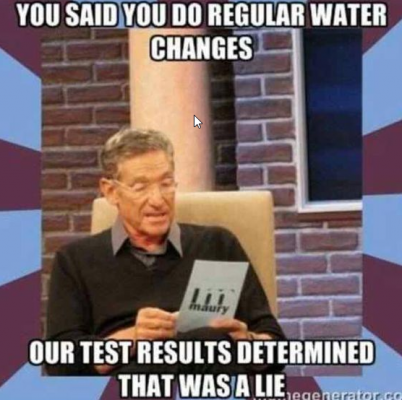Some SPS are just temperamental. It could be water params, pests, disease, lighting, some fish nipping at them or Tuesday... some SPS just hate Tuesday.
I lost a purple tort colony about a foot across in one night. It had been in the tank for a long time and no other SPS in the tank showed any signs of a problem. Water params good and stable, no new corals in months, same fish for over a year and the same lighting as always but it was Tuesday.
I lost a purple tort colony about a foot across in one night. It had been in the tank for a long time and no other SPS in the tank showed any signs of a problem. Water params good and stable, no new corals in months, same fish for over a year and the same lighting as always but it was Tuesday.

















